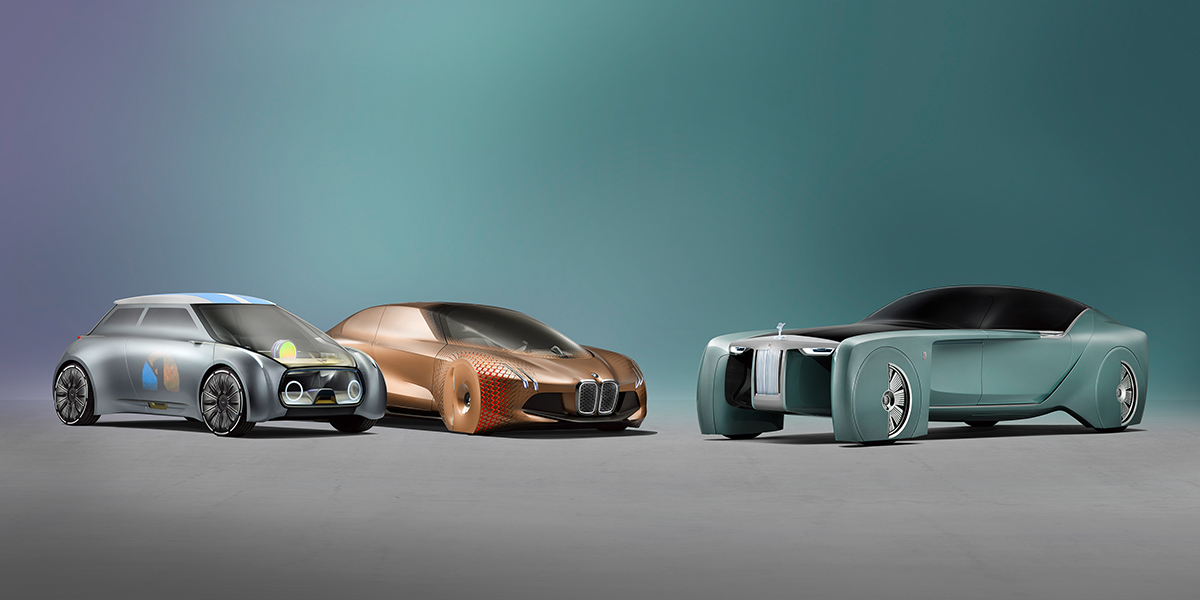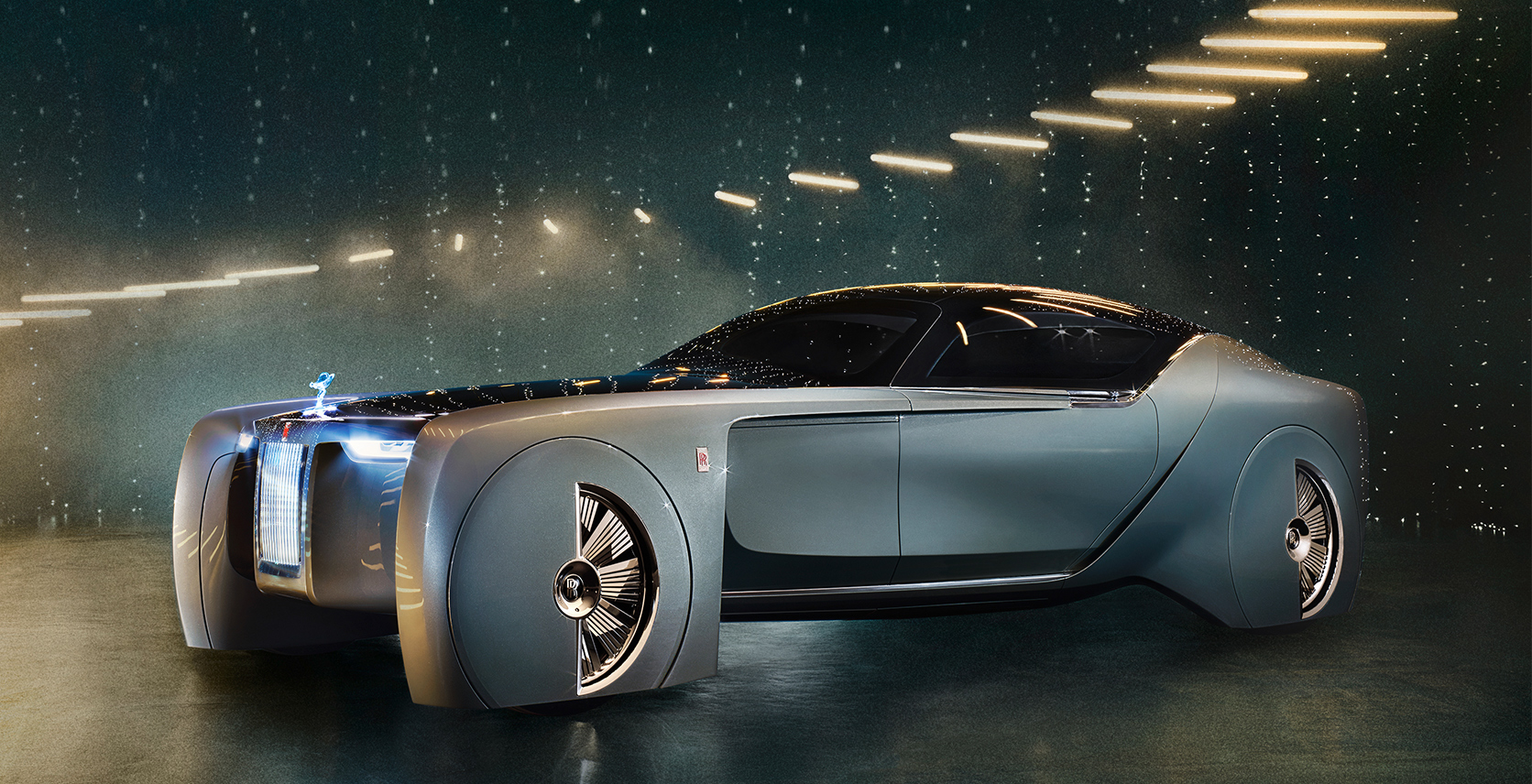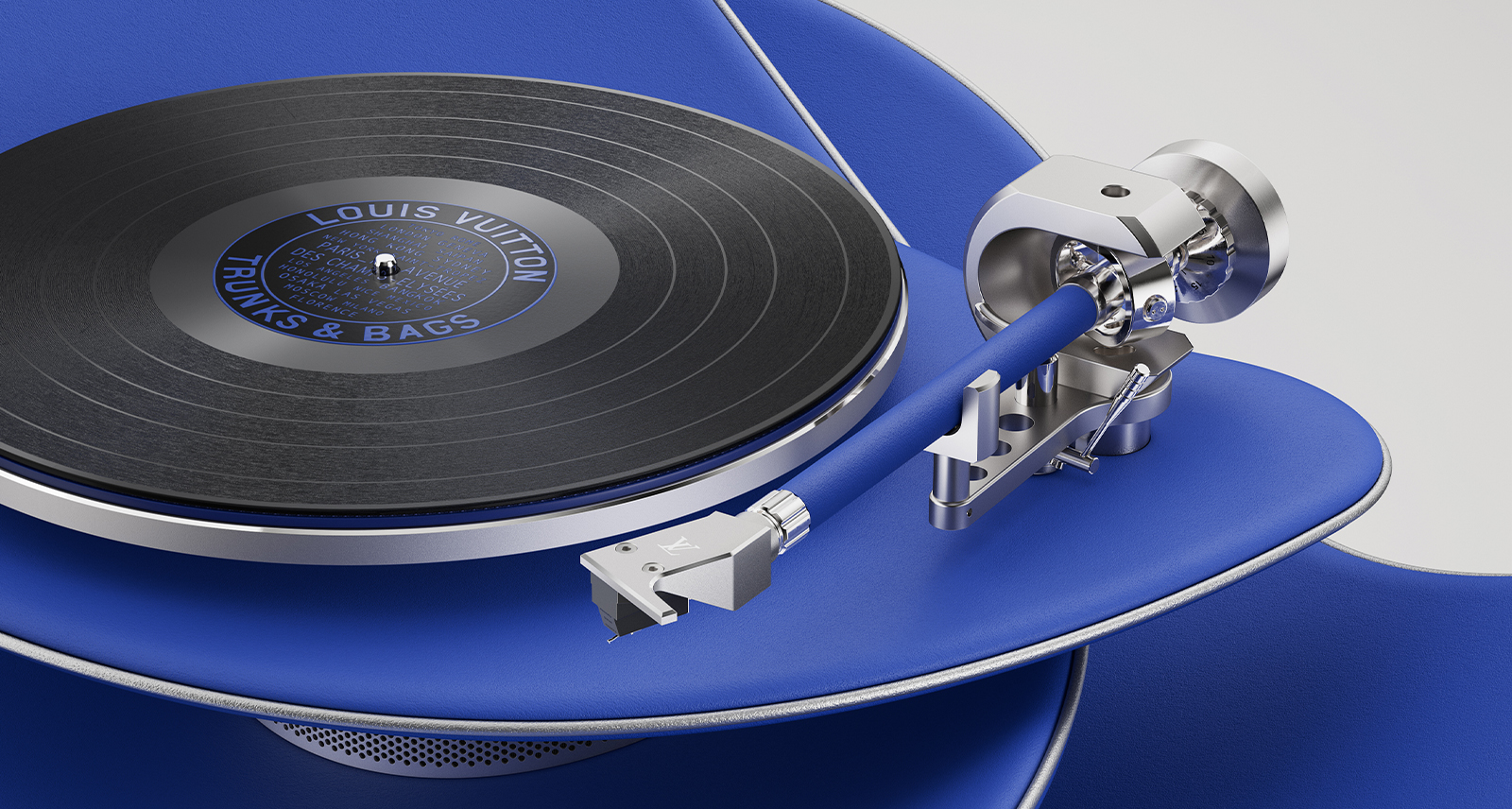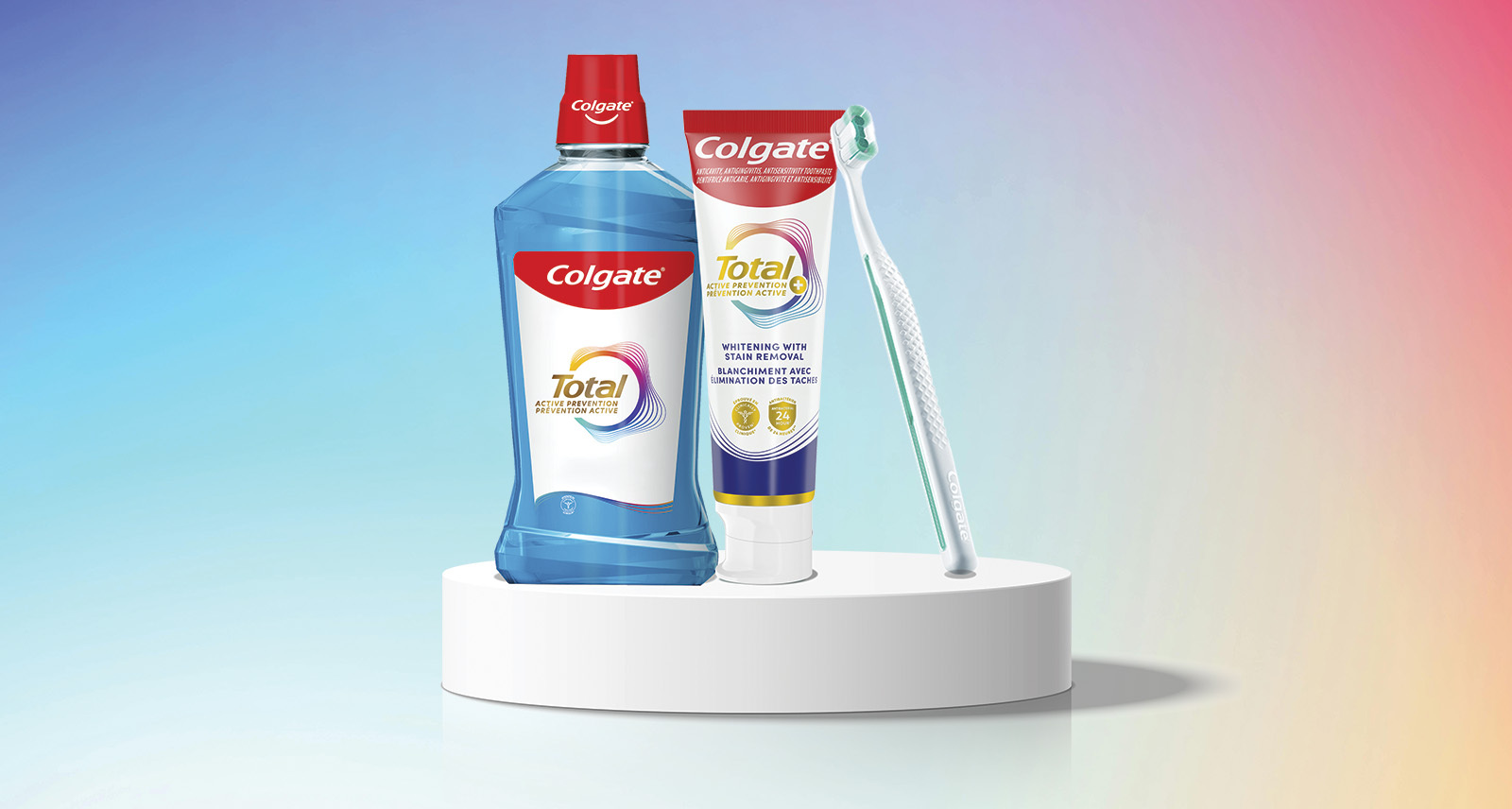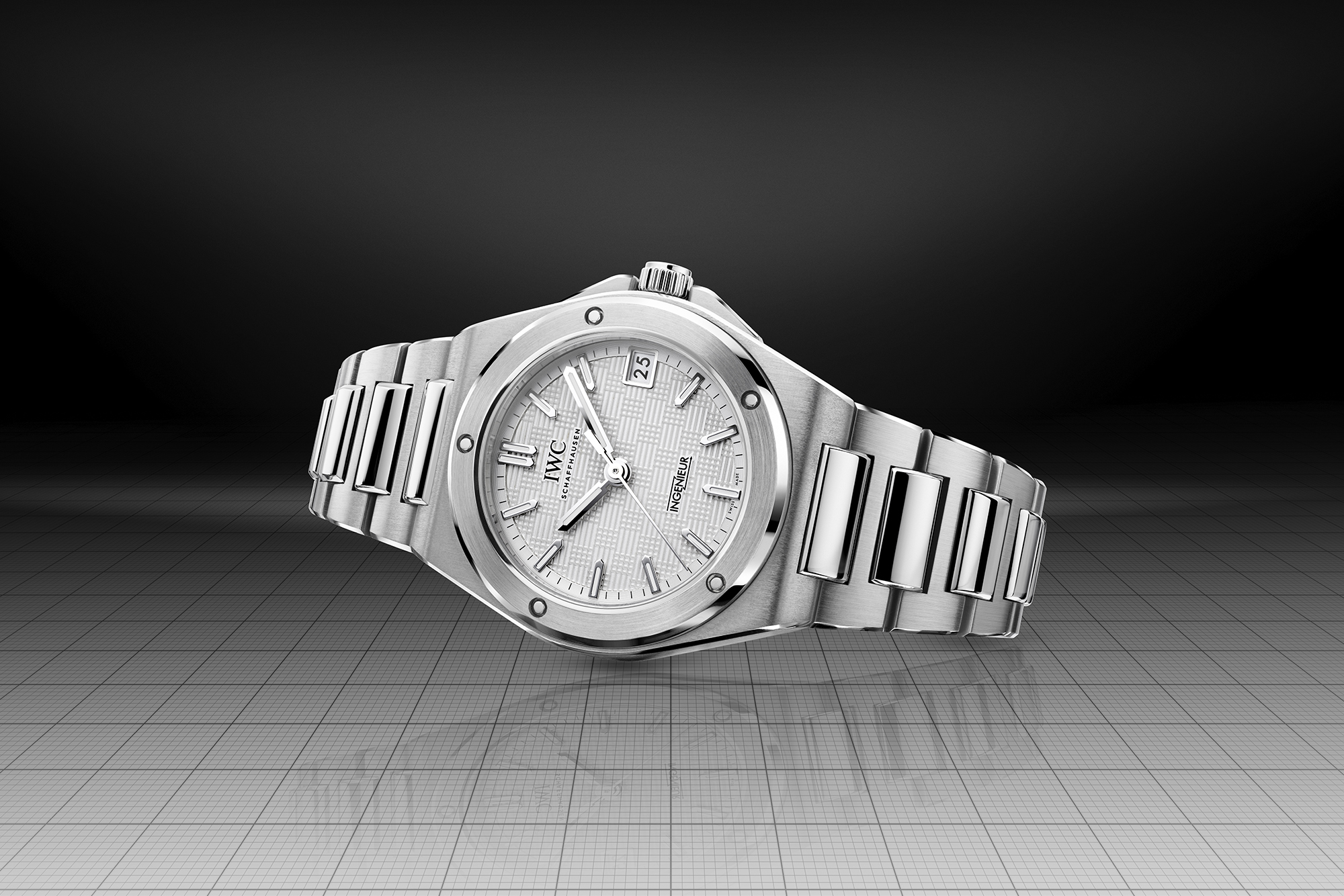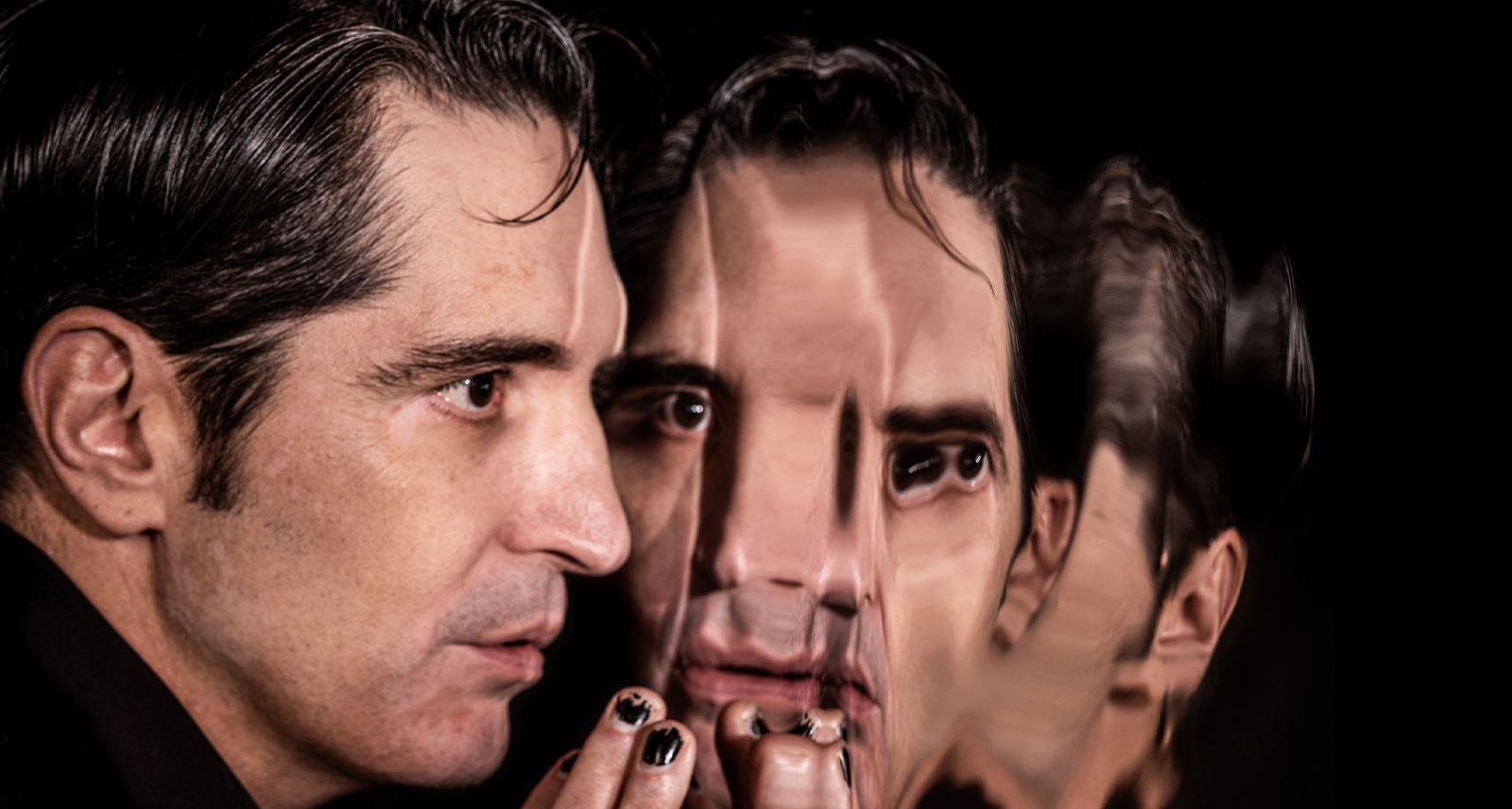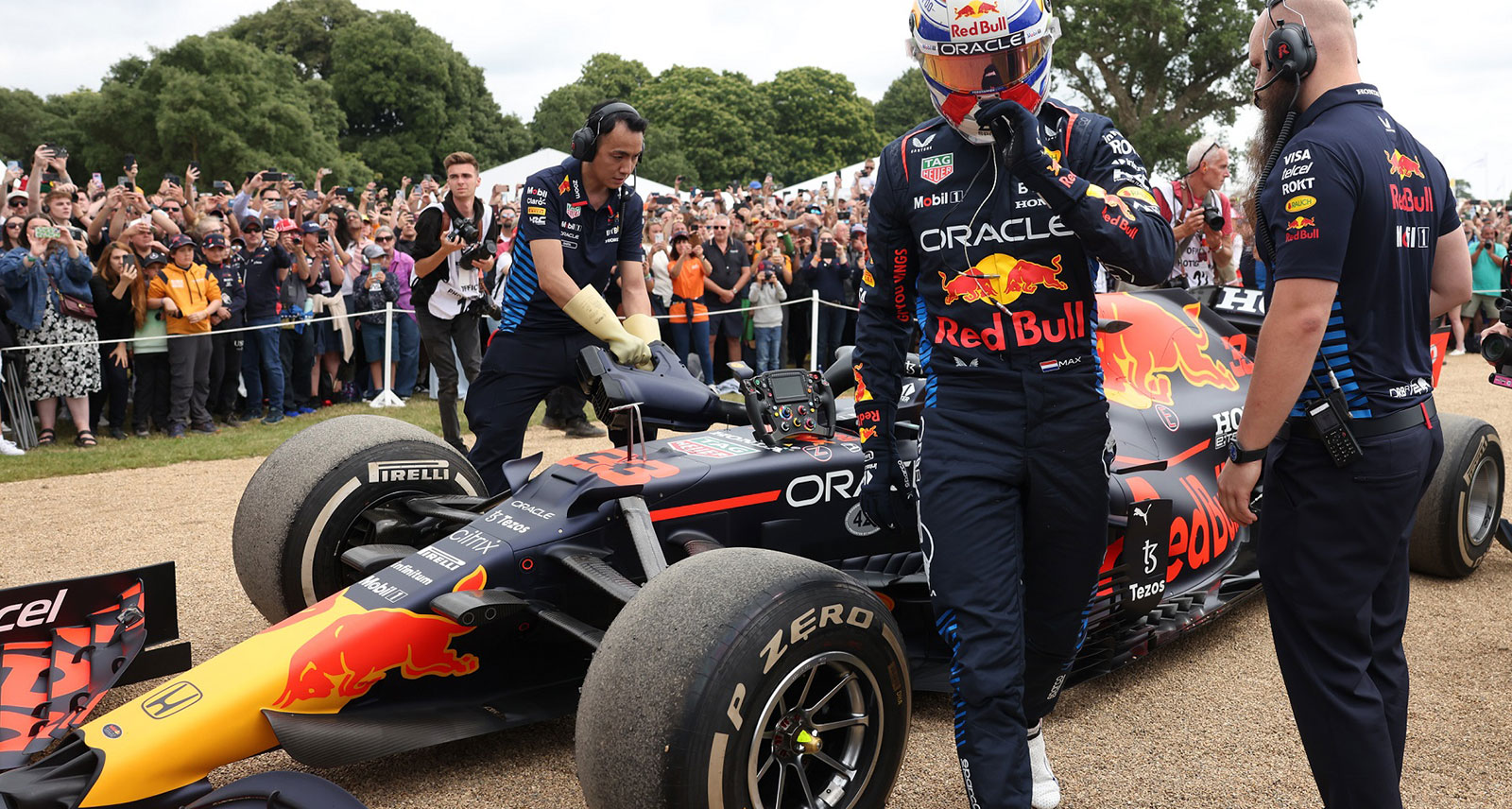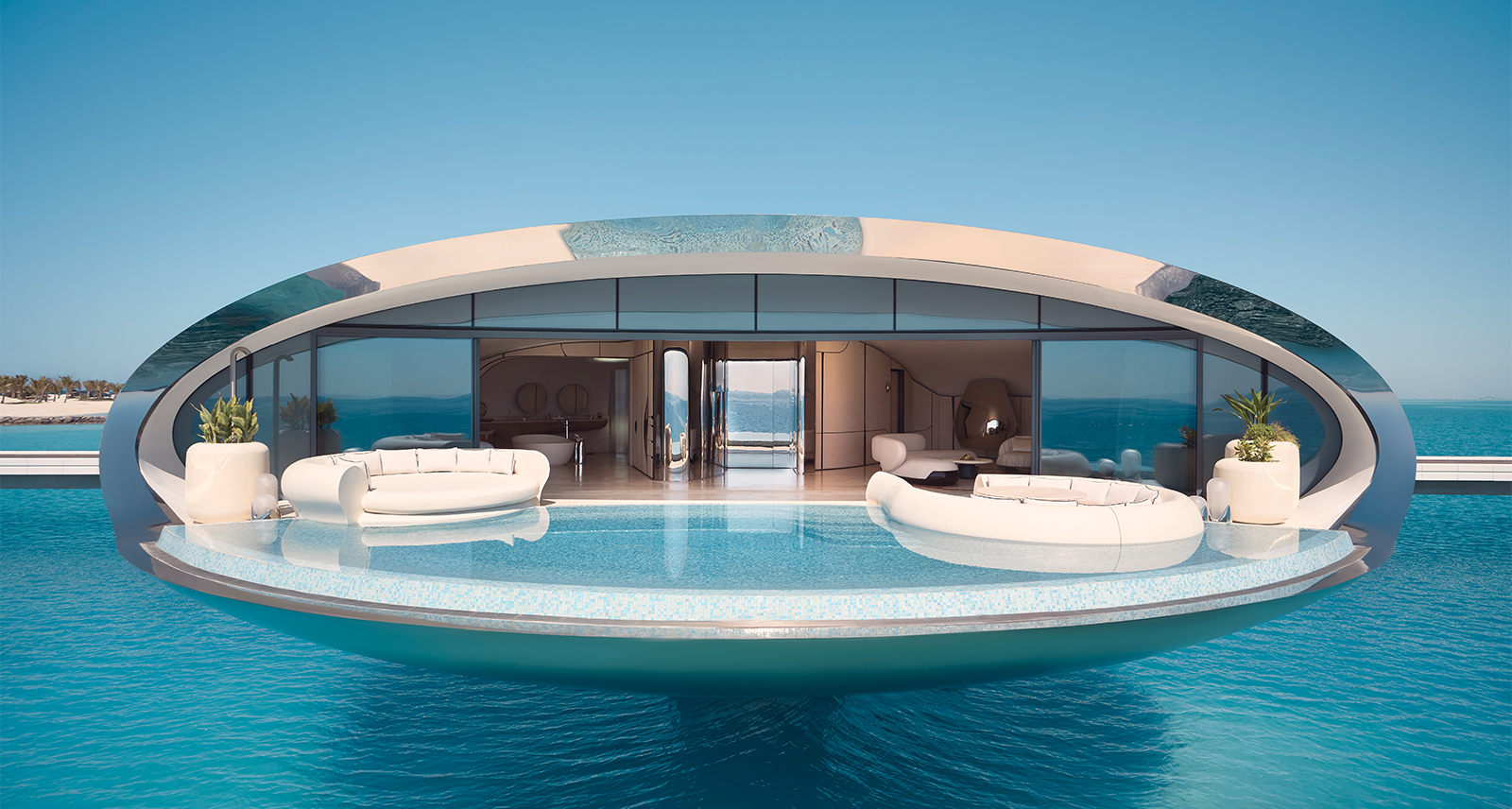Here’s What Cars Will Look Like in 30 Years
At a press conference in London, pre-Brexit, a German businessman wearing a stoic expression and a dark suit stood up to address the crowd. Not exactly the setup to a great thriller, but what he said next is worth thinking about: “We are confident the automotive industry will change more in the next decade than it did in the last 100 years.”
Imagine that for a moment. That’s Peter Schwarzenbauer, member of the board of BMW Group, saying everything that’s come before that basically made automobiles an essential thread in the fabric of daily life is nothing compared to what’s coming next. The cliffhanger here is that nobody is sure about what sort of cars are coming next. There’s just no consensus. Will they be self-driving robo-cars? Hydrogen-powered? Will you buy a car or just subscribe to BMW’s car service?
As it turns 100, BMW — which also owns Mini and Rolls-Royce — turned to its top designers to figure out the future, and how to get there.
“Without any vision, it’s extremely hard to imagine where to go,” said Torsten Müller-Ötvös, CEO of Rolls-Royce. The brief he gave his designers: “Free up your mind completely. Dream it up. What is the brand 25 or 30 years from now?”
Here’s what they came up with:
Mini Vision Next 100
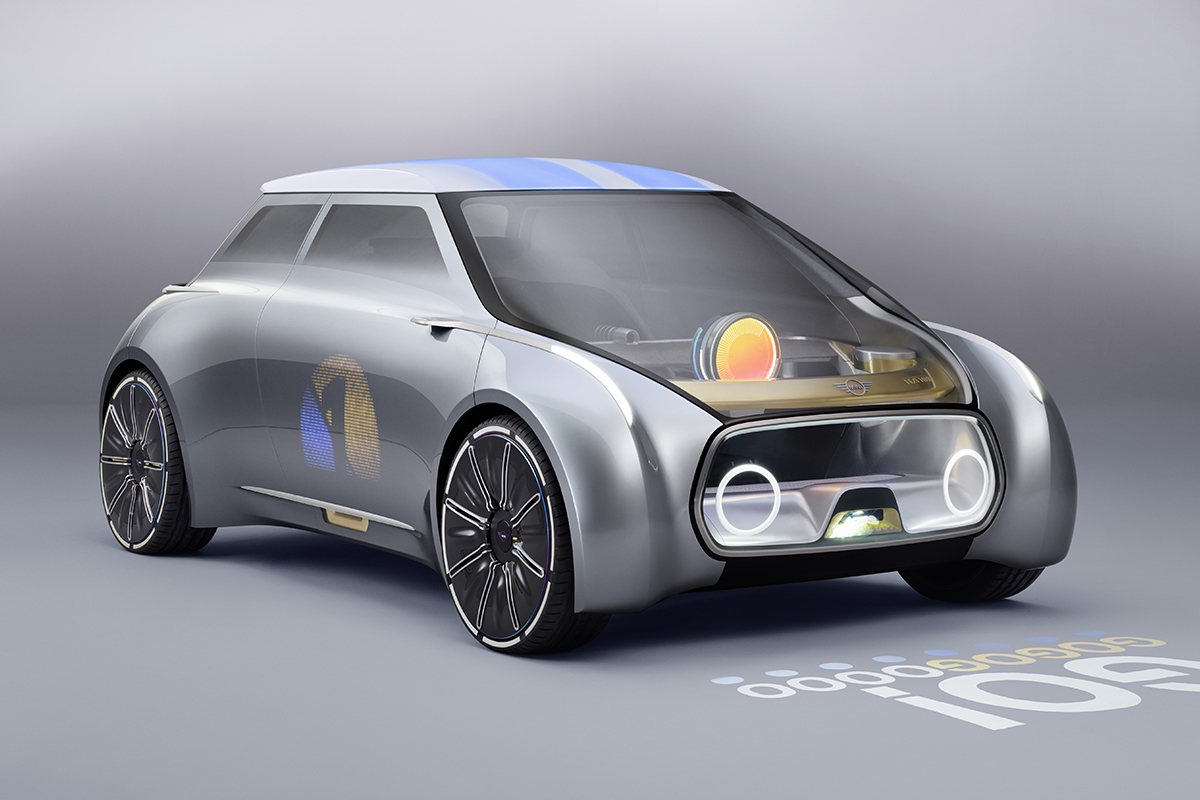
Alec Issigonis, the Greek-British engineer who designed the original Mini, imagined it as cheap, utilitarian transport for families keen to get moving in the years after World War II. It turned out to be that, and so much more.
In recent years, the Mini has grown ever larger to attract a wider range of customers, but this new concept car shows that Mini is going back to Issigonis’s original idea, albeit in a way he never could have imagined.
“The idea of the creative use of space is in the DNA of every Mini,” said Anders Warming, head of Mini design. Space will be at a premium as cities get more crowded, and making better use of it will only become more important, he added.
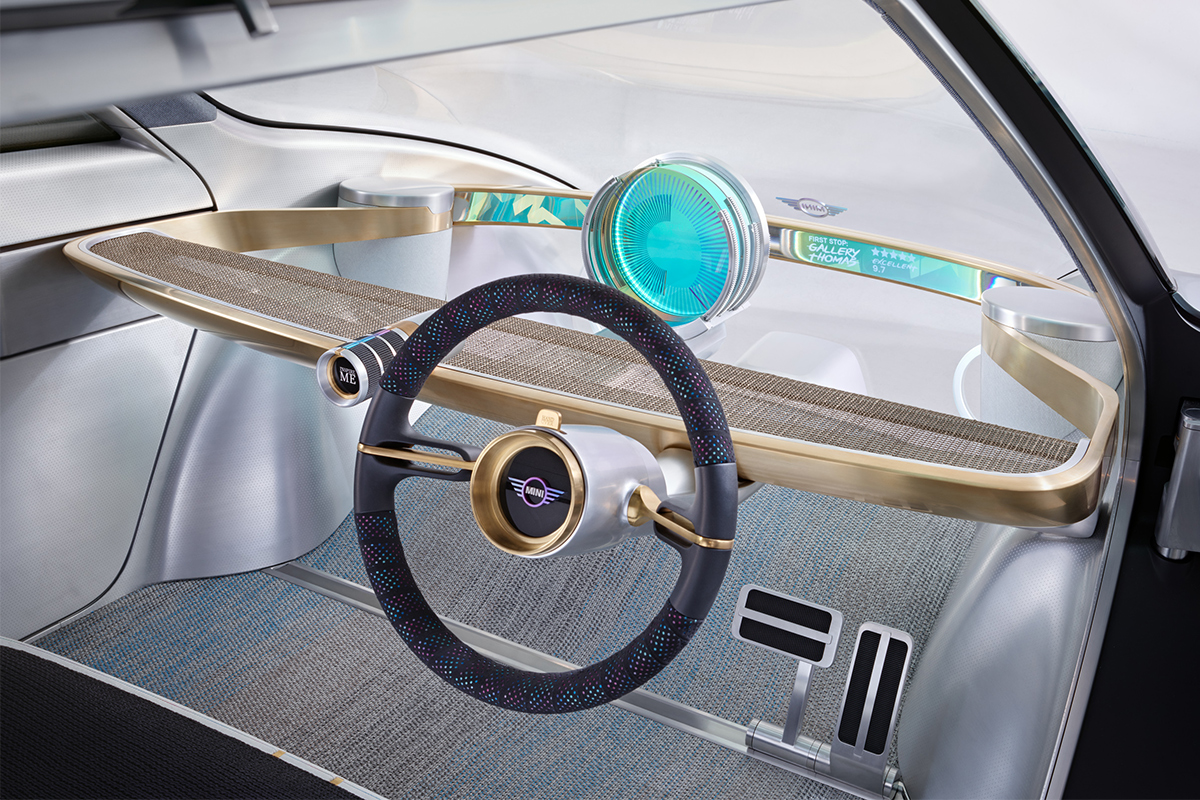
With no combustion engine to accommodate, the front of Mini’s concept is open; you can see right through the translucent bumper.
Instead of buying a Mini outright, you could subscribe to a cheaper mobility plan. There’d be a Mini waiting for you when and where you need it. Autonomous technology would let it deliver itself to you.
“Hello, Maria,” the Mini projects onto the ground as a new driver walks up to it, recognizing her using the same external cameras that let the car drive by itself. Slightly creepy? Sure. But massively convenient, because it’ll put the seat where you like it, remember your recent destinations, and pick up just where you left off in that podcast.
BMW Vision Next 100
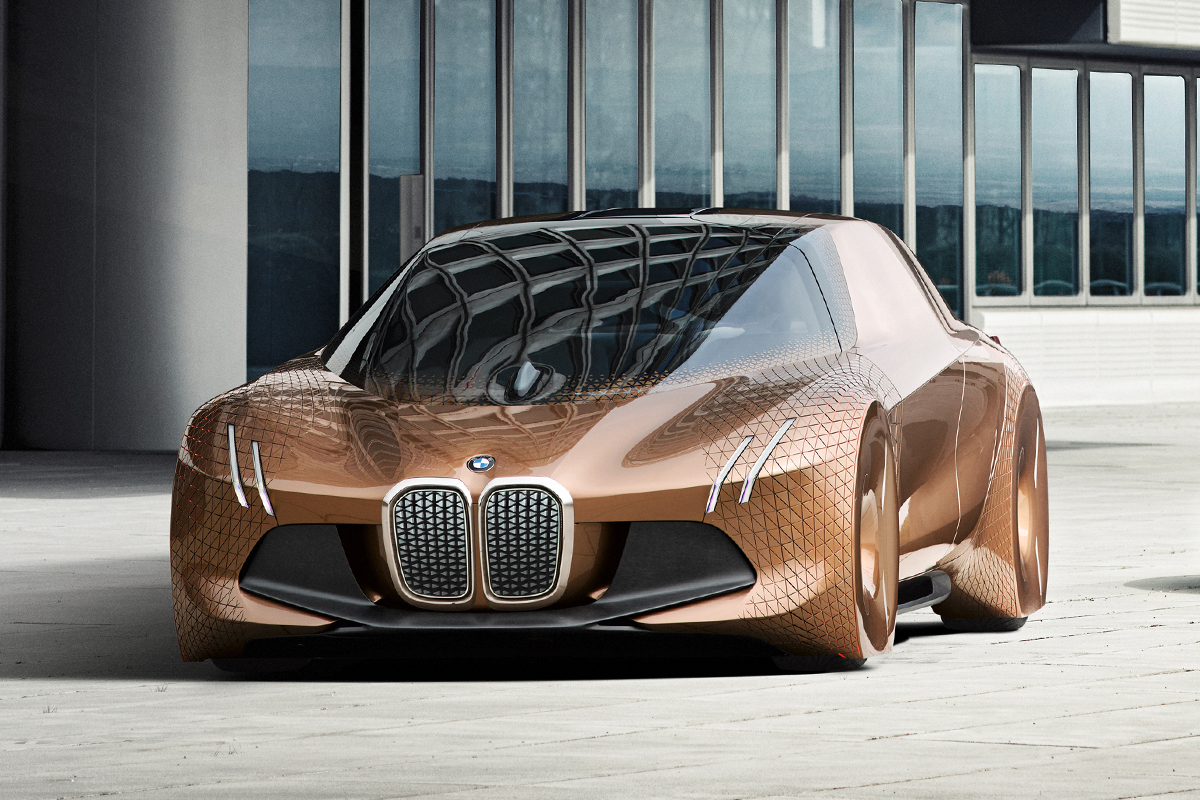
Tony Stark would be jealous. BMW’s concept is the most complete, most desirable, coolest vision of what driving — or not driving — in the future could be like.
You’ve got to see this thing in motion. The entire front windshield is a head-up display like Iron Man’s helmet. It overlays navigation instructions on the road. It tracks an unseen cyclist, predicting where he will pop out in front of the car. And it does all of this without the driver having to dive into sub-menus or press buttons.
When it switches to autonomous mode, the minimal interior reconfigures slightly to make conversation more natural. The steering wheel retracts into the dash, opening up more space. If a pedestrian walks in front of the car, an external strobe lets them know it’s safe to cross in front.
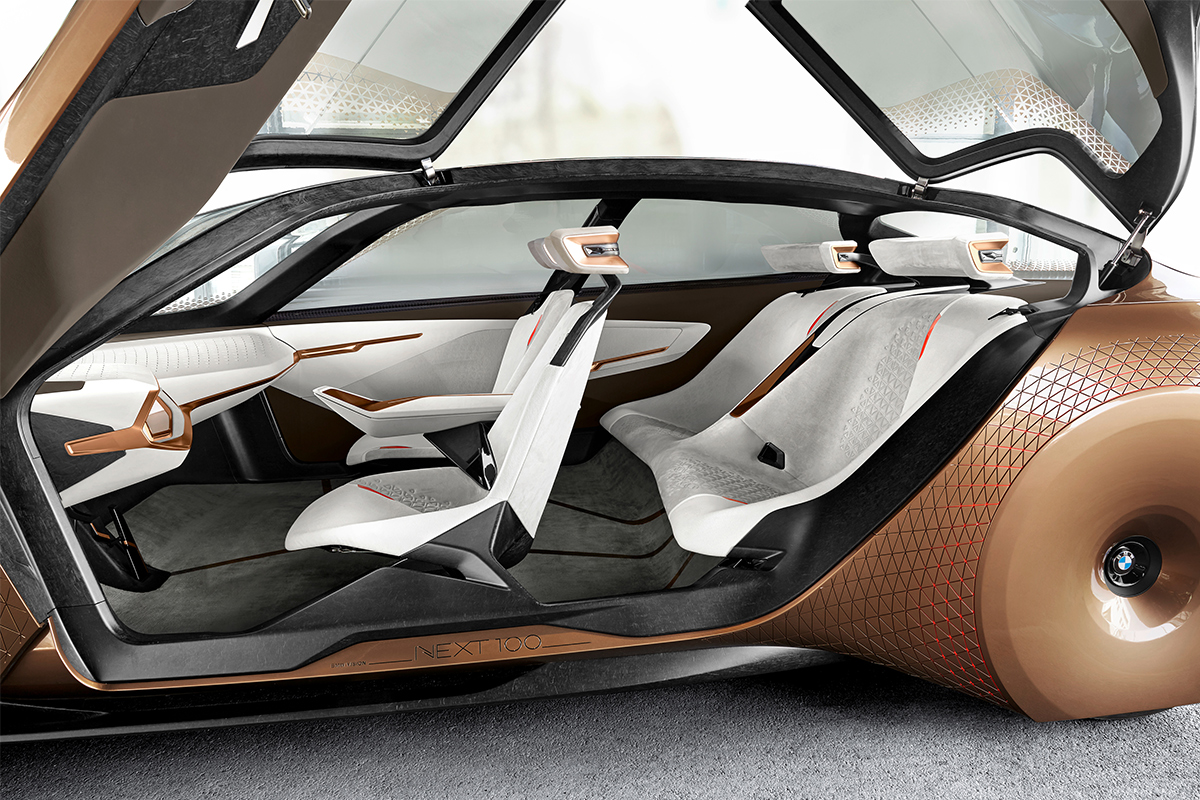
But this is not some comic book fantasy. By 2025 or 2030, BMW thinks it will be able to offer “brain off” autonomous cars in which the driver can finally relax and focus on something else. (Current semi-autonomous cars — like a Tesla with Autopilot — are like being chauffeured by your 14-year-old son. They are “brain on,” requiring the driver to watch the road and be ready to take over at any time, without warning.)
Driverless technology, electric and hydrogen motors, heads-up displays, stereo cameras, LIDAR, and cloud- linked GPS mapping are already in cars or in development. It’s not a big stretch to imagine this tech on the road in Peter Schwarzenbauer’s 10-year timeframe.
Rolls-Royce Vision Next 100
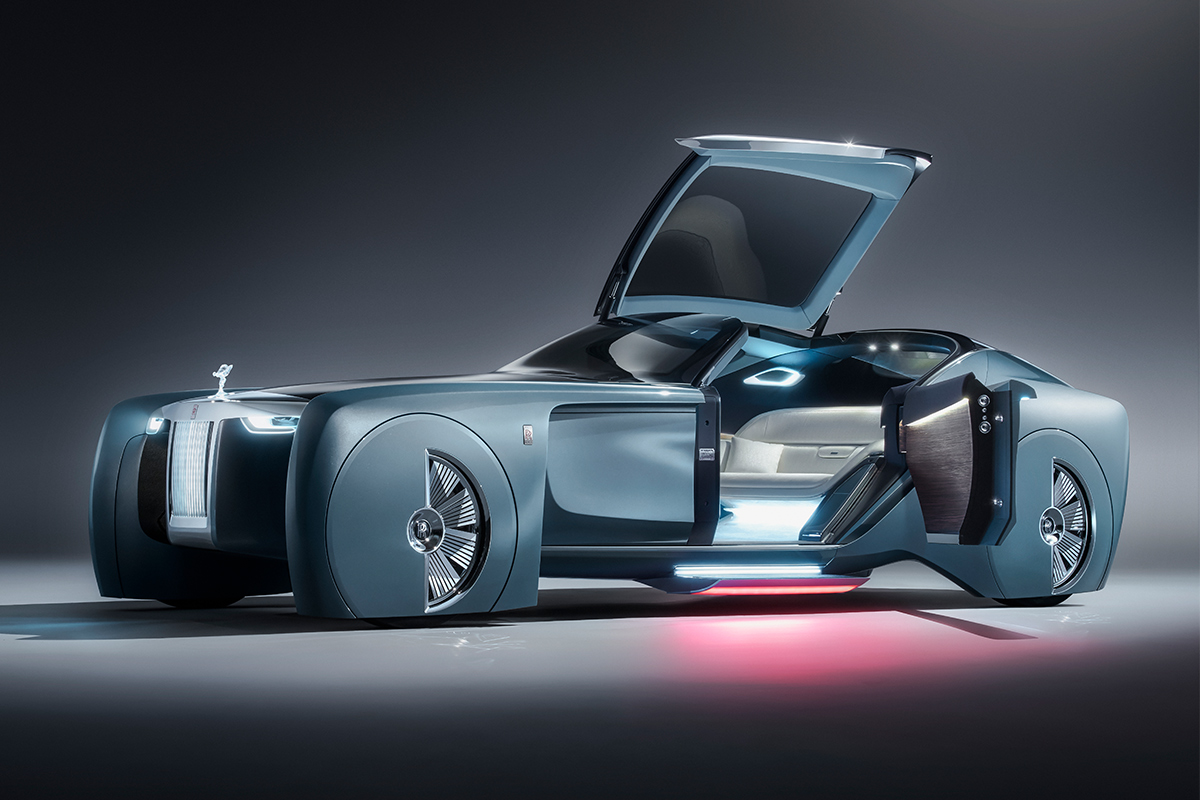
Google and Apple are apparently hard at work on 1950s retro-future self-driving car-pods, made to be shared among customers.
“One thing definitely clear is that our patrons of luxury are not interested in driving around in these bubbles or whatever,” said Müller-Ötvös. “They want a sort of private transportation that also sets them apart from what the rest of the world will drive.”
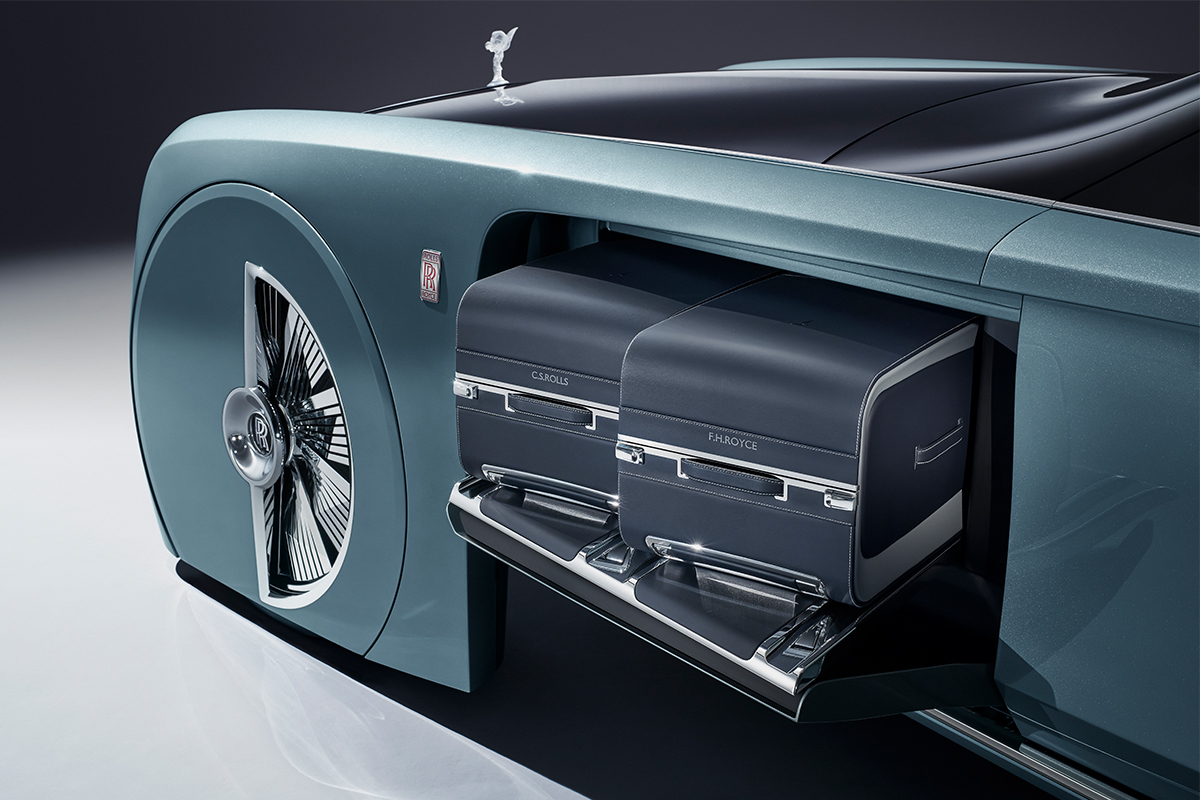
The Rolls-Royce 103EX concept fits the bill and then some. It’s as big as the biggest current Rolls-Royce, but it’s a two-seat coupe rather than a limo. It’s gigantic, imposing, and yet somehow so graceful it appears to float over the road. Inside it has a single silk sofa, complete with a pair of throw pillows, but no driver’s seat because it’s fully autonomous. At the big reveal in London, the car’s roof lifted up, its door opened backwards, a step extended from the undercarriage, and a model in precipitously high heels stood up from the sofa and stepped out. Grand Arrival. The 103EX is designed to produce zero emissions, because in 20 or 30 years, that might be the only type of vehicle allowed in major city centres.
